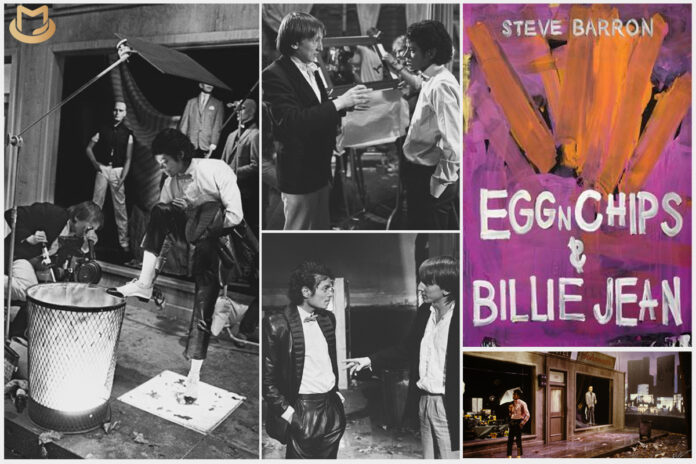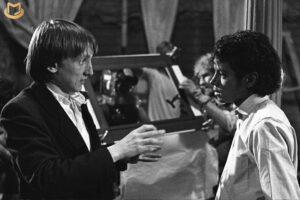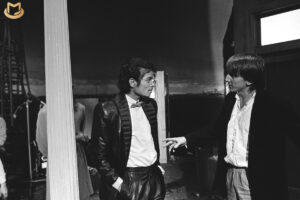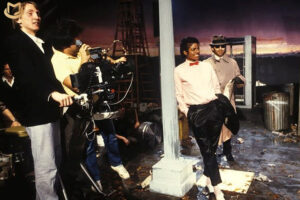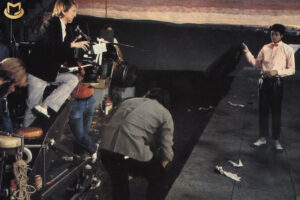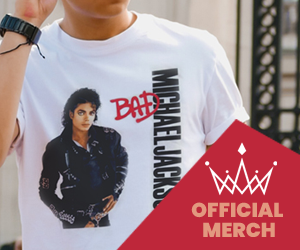We all know “Billie Jean” and its music video that broke racial barriers on MTV but it wasn’t easy to get Michael Jackson on MTV.
Steven Barron tells all in his book “Egg N Chips & Billie Jean : A Trip Through the Eighties”.
“I presumed MTV would play what was a really great pop song, and so I was really surprised when I heard it might not go on MTV after we finished it. I was confused as to why, because this video felt different — it felt extraordinary when I was making it, like beyond anything else that was out there, or beyond anything I’d ever seen in terms of movement and style and instinct,” Barron tells Yahoo Entertainment. “I thought it was going to be enormous, that everyone would have the reaction that we were having, and that all we had to do was show them. I thought it would definitely be seen everywhere.
“I just felt this absolutely wasn’t right,” Barron continues. “What do they mean, it ‘isn’t their audience’? Obviously, I was filled with suspicion about the real motives behind the nonacceptance of the video.”
Thankfully, after CBS Records president Walter Yetnikoff threatened to pull his label’s artists from MTV if “Billie Jean” wasn’t put in rotation, MTV relented. And the rest was history.
With “Billie Jean,” Michael Jackson became the first artist added to MTV’s heavy rotation — but that didn’t even happen until the final week of March 1983, well after the single had reached No. 1 on the Billboard Hot 100. However, eventually the video smashed through the network’s color barrier. “Michael Jackson became MTV. He was MTV,” Barron says.
Barron was already a veteran video director by ’83; he first caught Michael’s attention with his glossy clip for the Human League’s Second British Invasion-launching “Don’t You Want Me” from 1981, which had a cinematic quality due to it being shot in 35-millimeter film. (“I think Michael was obviously very sharp and recognized the difference in the film quality,” says Barron.) The illuminated floor tiles in “Billie Jean” were inspired by another one of Barron’s early videos, for Adam & the Ants’ “Antmusic.” However, Jackson and Barron’s collaboration took everything to a new level.
Vaguely tasked with creating “something ‘magical and cinematic,’” Barron came up with the concept of “everything around Michael glowing, and coming off his energy, basically. … The idea really was the Midas touch, that what Michael came in contact with would just glow — that he had that superpower.”
Barron faxed the treatment to Michael’s management, and “didn’t get much feedback from them, really, except the typo had to be changed, which was highly embarrassing. I had to change the typo,” he chuckles. “I started it with, ‘A guy walks down the street.’ But I actually accidentally put, ‘A gay walks down the street.’ A complete and utter typo.” Luckily, Jackson’s camp wasn’t offended, and the shoot was on. “One of the only notes management told me to give the go-ahead was, ‘Keep some time allowed in the video for Michael to dance. He’s thinking of doing some dancing in it.’”
Unfortunately, Barron was on a tight $50,000 budget, It turned out Barron would have to shoot with 16-millimeter film, not 35, and Michael’s idea to have the tailor shop’s mannequins spring to life and dance behind him was also nixed. Barron was also unable to rig up touch-sensitive pressure pads for the light-up pavement stones, which meant Michael’s choreography would have to be incredibly precise to get the right effect.
“The art department had to compromise. They just couldn’t afford the pressure pads; they couldn’t afford the automation of it. And so, it was in the hands of electricians,” Barron recalls. “On the pre-light day, they worked out how they would just switch it on as Michael walked across these stones — not knowing how fast he was going to walk, or how fast he was going to dance. So, it was disappointing. I actually had to take Michael across that part of the set on the morning of the shoot, and I apologized: ‘Michael, I’m sorry these things don’t automate. I’m going to show you which ones light up and which ones don’t. We can rehearse it a few times.’ I felt very embarrassed telling him, because I knew that was kind of restrictive and would take some learning. But he said, ‘No, no, let’s just shoot it.’”
Barron’s “mind was blown” once the cameras started rolling. “I had no idea how he was going to move. It looked like nothing I’ve ever seen or worked with before. He added this sort of trepidation into the dance, which was about remembering what would light up and what wasn’t, but to the viewer it’s just got this eccentricity to it and this unpredictability. It was completely magic. And as I tracked back with him through that whole chorus, the eyepiece in my camera literally steamed up because of the image. The heat of me watching what was going on just made it disappear into a fog, because it was so incredible.”
At that moment, not knowing about the difficulties with MTV that lay ahead, Barron had “more than a hunch” that the “Billie Jean” video would be a groundbreaker. “I thought, ‘When people see this, the world is going to change,’” he recalls. “It was just irresistible and brilliant and totally enthralling to watch. We were all pretty breathless. The crew broke into spontaneous applause.”
Barron remembers the entire process of working with Michael, who was only two years younger than him, as being “a joy, really. He was a curious cat. He’d ask about everything. He was fascinated by the craftsmanship, the art department, everything. He would constantly look for knowledge. He was a collector of information and details. It felt like he tried to find the magic in things — a bit of a childlike curiosity, but a grownup brain.”
“MTV turned into ‘MJTV,’” he laughs, “because Michael was the most prolific, brilliant, showman, artist imaginable, coming along at the same time as music video was being recognized. It was the answer to everything. It was what made everything so enormous. Michael was the artist who transcended everyone, topped everyone, was better than any of them. And so, there was that little resistance, but then there was total gratitude.”
You can purchase Steven Barron’s book “Egg N Chips & Billie Jean : A Trip Through the Eighties” HERE


